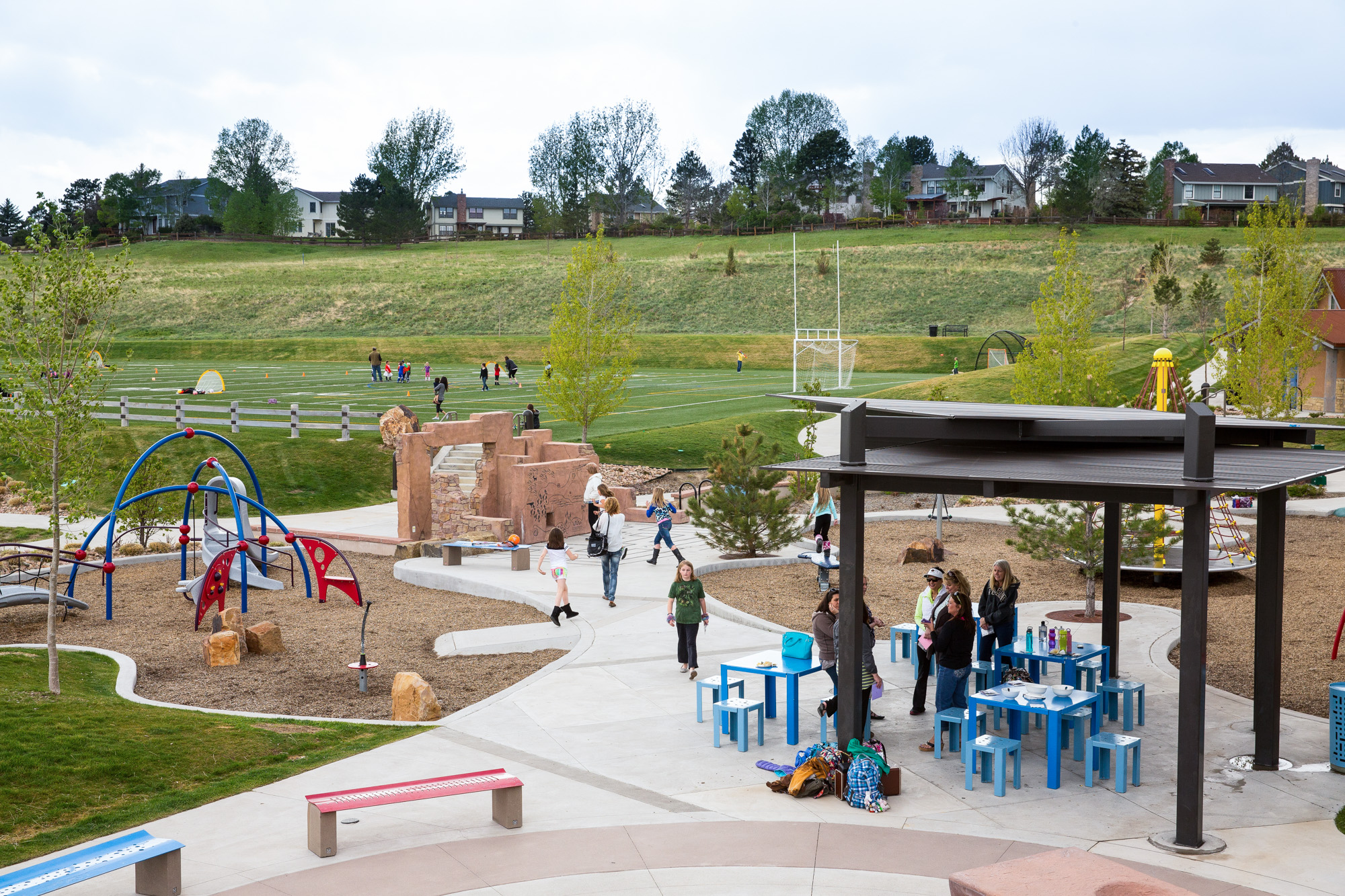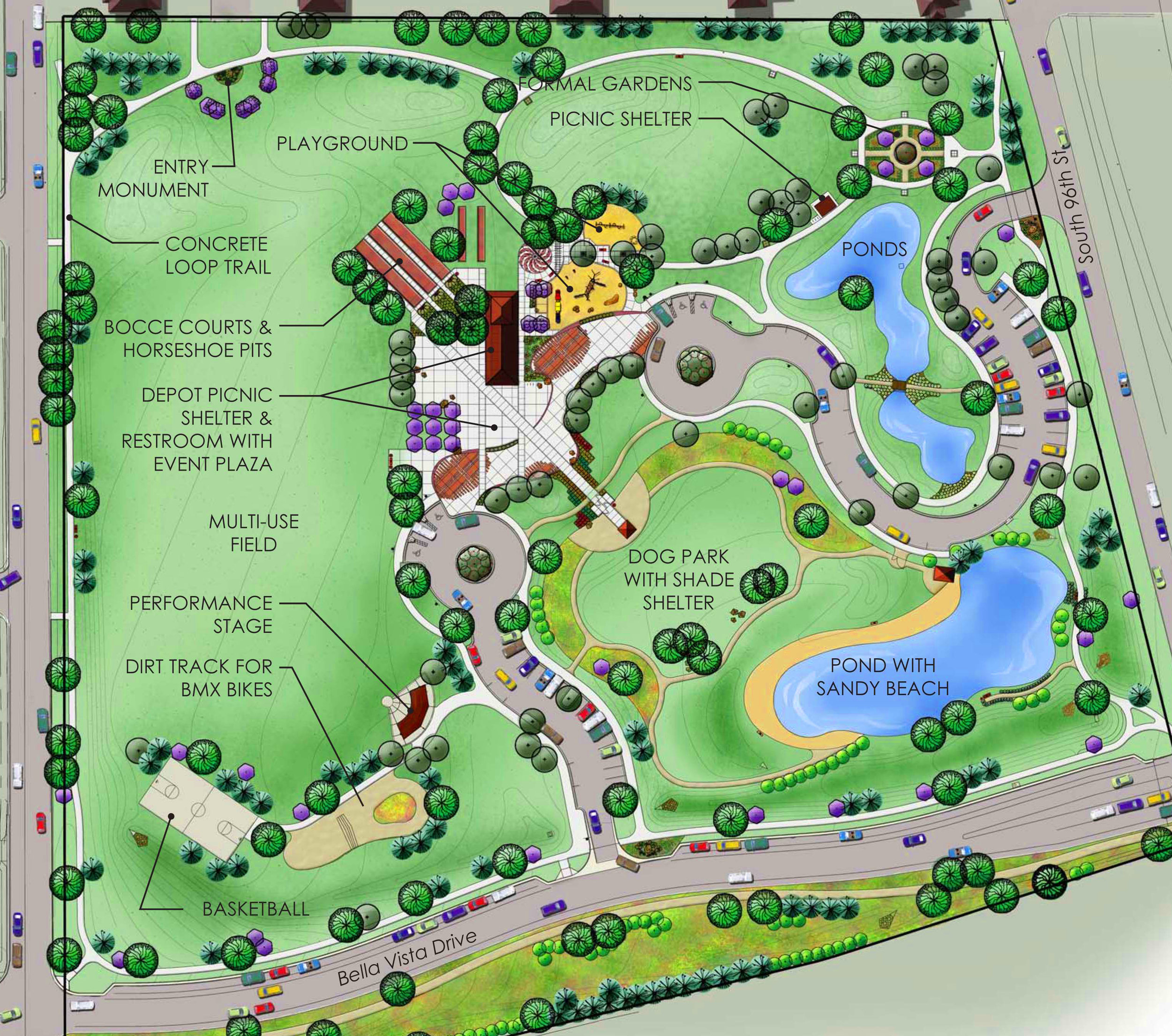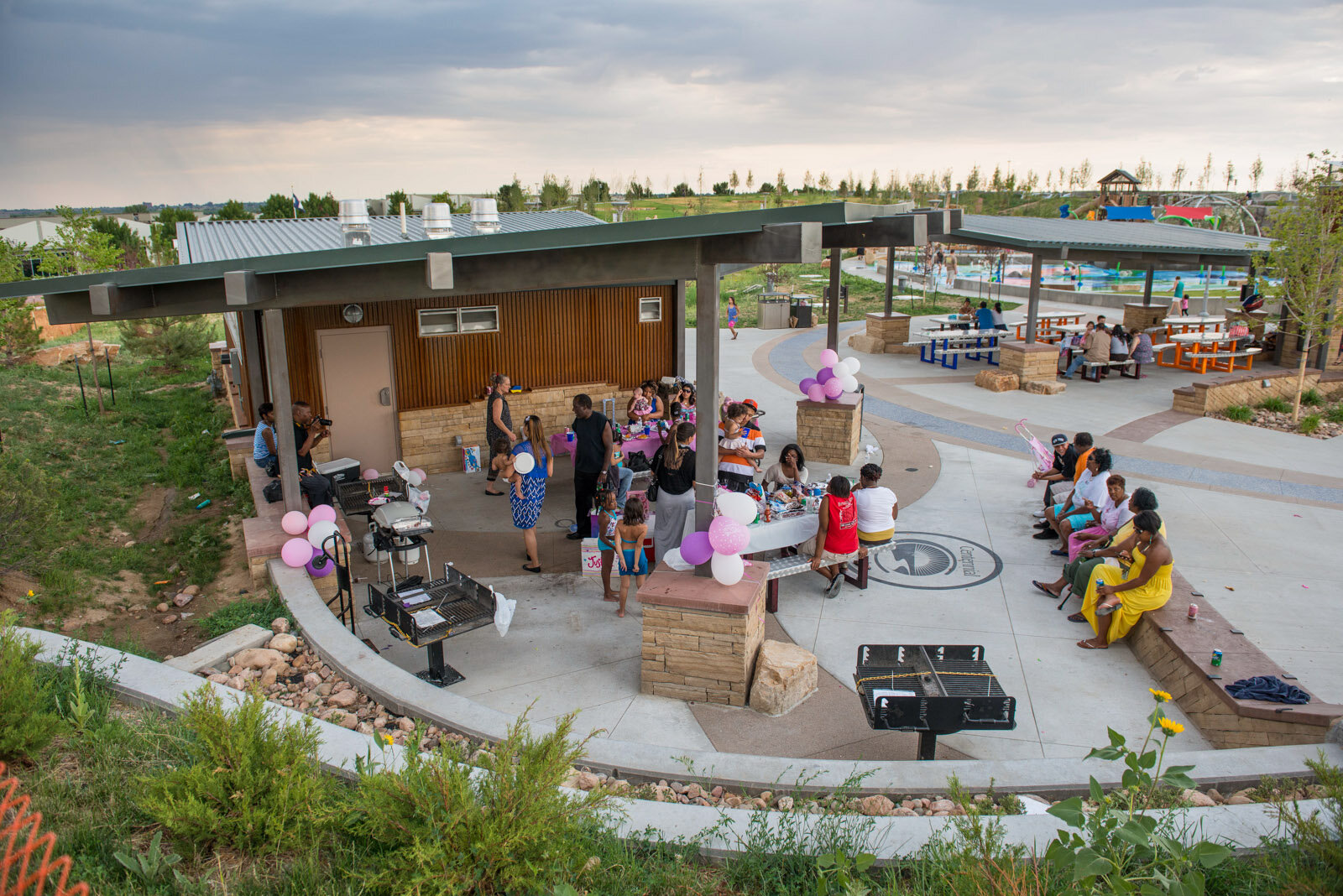Link Activities through Social Gathering Places
This article was written by Axel Bishop and first published in Parks & Rec Business magazine in January, 2012.
It is a supplement to our five-part series on improving public health. To see other blogs, go to our blog page.
What do grassy hillsides, dog parks, playgrounds, picnic pavilions, and sports fields have in common?
Certainly they provide places to play, but they also provide a reason for people to get together. More than anything else, that may be the great modern goal of recreation facilities. The dogs, kids, and sports teams all enjoy running around and exercising. And the spectators the dog guardians, the parents and grandparents, the team supporters-can connect with other people who share their interests. An emerging (or re-emerging) concept in community park design and planning is to link all these different areas together around a central gathering space or hub. This space allows park users either to participate in different activities-still maintaining their social connection to other people—or to comfortably observe the activity and simply share the outdoors.
In this fast-paced culture, parks increasingly are looked to as the “third place;” where friends and neighbors want to gather informally and create a sense of community. With limited time to be together and concerns over child safety, entire families usually go to the park, often spending many hours there. The social aspects of being at parks are just as important as the opportunities to exercise. In fact, the socialization may be even more important for health, relaxation, and play.
A Vantage Point with a View
After several decades of city zoning and community park design that encouraged focused-use athletic complexes, we are moving back to an earlier concept of park design for multiple activities. What's new about park planning is the idea of linking all these areas to a central gathering space. In this concept, playgrounds, sports fields, waterparks, nature play areas, trails, and other activity areas are all next to each other and radiate from this social hub, something like a village commons. The hub can be placed so people can see most or all of the activity areas. The family might have a picnic together on the central green or plaza, and then Dad and Spot may visit the dog park, while Mom rock climbs, Bro plays soccer, Sis plays on the playground, and Grandma walks on a nearby path. The most successful of these new parks provides places to be active, but also comfortable and quiet places in which to observe, rest, and have conversations.
Community Park
The Community Park in Louisville, Colorado, is a good example of arranging multiple uses radiating from a hub. The 11-acre downtown park features a central civic plaza, picnic pavilion, and playground area that link other elements such as a dog park, basketball courts, a performance amphitheater, and a multipurpose field. Louisville residents wanted a community space for walking while keeping tabs on one child at the playground and another at the BMX dirt-bike hill. They wanted to play bocce or horseshoes, or merely watch these games from the covered pavilion. Visitors find more activity areas clustered nearer the center and fewer activities at the edges of the park. This layout allows park visitors to choose either active or pastoral space, or somewhere in between.
Elk Ridge Park
At the 11-acre Elk Ridge Park in Castle Pines, Colorado, the gathering plazas in the hub are connected directly or by sight lines to a playground, mazes, a 50-foot-tall climbing wall, a tube slide, a sprayground with a waterfall that people can walk behind, a synthetic-turf sports field, and multiple picnic shelters. Quarter-mile walking loops with activities such as geo caching and scavenger hunts radiate from this gathering place like the petals of a flower. Parents who want to jog or read a book are always within 200 yards of their children, even though they are all engaged in separate activities.
A Successful Community Park Design
The hub concept can be adjusted for any site size and shape. Here are some planning and design considerations:
1. Include a variety of activities
Design the hub to connect with a variety of activity areas. Place as many activities as can be accommodated compatibly in close proximity to the hub. The gathering space should have open access or views to the playground, athletic field, amphitheater, or other major elements.
2. Create rooms
Provide comfortable places to hang out. Create a “room” such as a pavilion, an overlook shelter, a great lawn, or a terrace surrounded by a grove or garden in which people can sit and socialize. Provide comfort elements, such as skylights, a fireplace or fire pits, and a balance of enclosure and openness.
3. Link Walks and Trails To The Hub
Design multiple loop trails of different lengths that circle back to the hub. Walking is the number-one fitness activity of Americans. Providing a variety of walking paths that loop around activity areas allows people to walk a little or a lot, and maybe walk all the paths. Walkers can exercise while keeping track of family members in the activity areas. Loop trails, as opposed to out-and-back trails, provide continually changing views and a sense of spaciousness, even on smaller sites.
4. Inclue Interesting Features and Elements of Discovery
Provide reasons to explore trails and multiuse paths. Some paths will have functional purposes, such as connecting Paths with inviting entries can pique users' interest and encourage exercise and exploration by providing a sense of discover, as well as access to a spectacular view or contemplative place. Trail signage, kiosks, and games along the paths can educate visitors about plants, geology, the cultural history of the site, and other subjects. Multiple crossings in the loop-path system provide opportunities for neighbors to meet.
Linking It All Together
Linking people to each other by providing a place to socialize in parks is an important part of helping create that opportunity to share time with others. That keeps us and our neighborhoods healthy.






